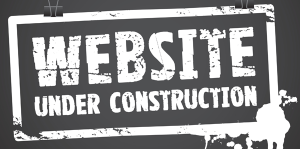
There are many decisions to make when designing a website, but one thing is certain – it’s important to have one. And a good website comes down to planning, so get out your notebook and let’s begin with some questions to ask yourself:
- Who is your audience?
- Who needs your services?
- How will your audience find your website?
- What will they be looking and asking for?
- What actions do you want them to make? Do you want them to email you, sign up for your newsletter, ask for promotional materials or can they give you a call?
- How will you get them to look around and how will you get them to come back?
- What websites do you love and why?
- What websites do you dislike and why?
Appearance is everything when setting up a website. Potential customers take less than 5 seconds to decide if they like your page or not. It’s a good idea to focus on the important steps needed to make your site functional and then spend time making it visually appealing.
Here’s a great list to get you started:
1. SEO
Adding keywords to your website helps your page stand out in search engines such as Google. A good start is to keep your site updated. The more valuable keywords you add the higher your site will rise in search rankings. Focus on the type of lingo that your industry uses and go from there.
2. Images
Choose imagery that will suit your site and portray the right feeling. Consider adding illustrations, photographs, infographics and charts. Be careful if you choose to use clip art and stock images because you want imagery that is original and not used on other sites. Certain stock images can be used often and you certainly wouldn’t want your competition with the same pictures.
3. Responsive design
It’s important that your webpage is user friendly on your laptop, iPad and smart phones. Responsive design makes everything look uniform and helps it flow the way it should on whatever device you are using. This is especially important if someone is looking for your contact information and a map to where you are located.
4. Good writing
A good biography, an about page, product and service descriptions are really important to have on a website. The type of writing can either make or break your page. Make sure the copy is professional and well written.
5. Well designed fonts
We all know that Comic sans gets a bad wrap so it’s safe to say it shouldn’t be a part of your page. Good fonts should be legible and have good spacing to help the reader catch all your details. Be careful to avoid white text on a black background. San serif fonts flow easier when made small. Always make sure that your text can be easily read on a smart phone as well as a computer.
6. Navigation links
Add useful links to your page so your audience knows where to find information fast. Header links include: home, about, products and services, contact, blog and latest news buttons. Make sure they stand out either at the top of the page or neatly off to the side.
7. Social media buttons
Links to your social media pages are important if you are actively online and want a broader audience. Encourage them to follow you on Facebook, LinkedIn, Twitter, Pinterest and Google+ with buttons that are easy to find. You may even want to consider adding your twitter feed and Pinterest to your page if you are posting information and photos that are relevant to your business.
8. A news page
Share your updates, promotions or any interviews you may have done to keep your audience informed. This is a good section of your webpage to add to your social networks to keep them coming back to your site.
9. Complimentary colour
Colour is really important on a webpage. Depending on what you are specializing in, it should reflect the right tone and personality of your business. If you are a wedding boutique, try pastels and softer colours as opposed to a bike shop that want colours to pop.
10. A contact page
Always have an area on your webpage that allows your community to email you. You can also set up a newsletter sign up button to keep them up to date. Keep this area of your site easy to navigate so if your customers have any concerns or questions they can email you.
